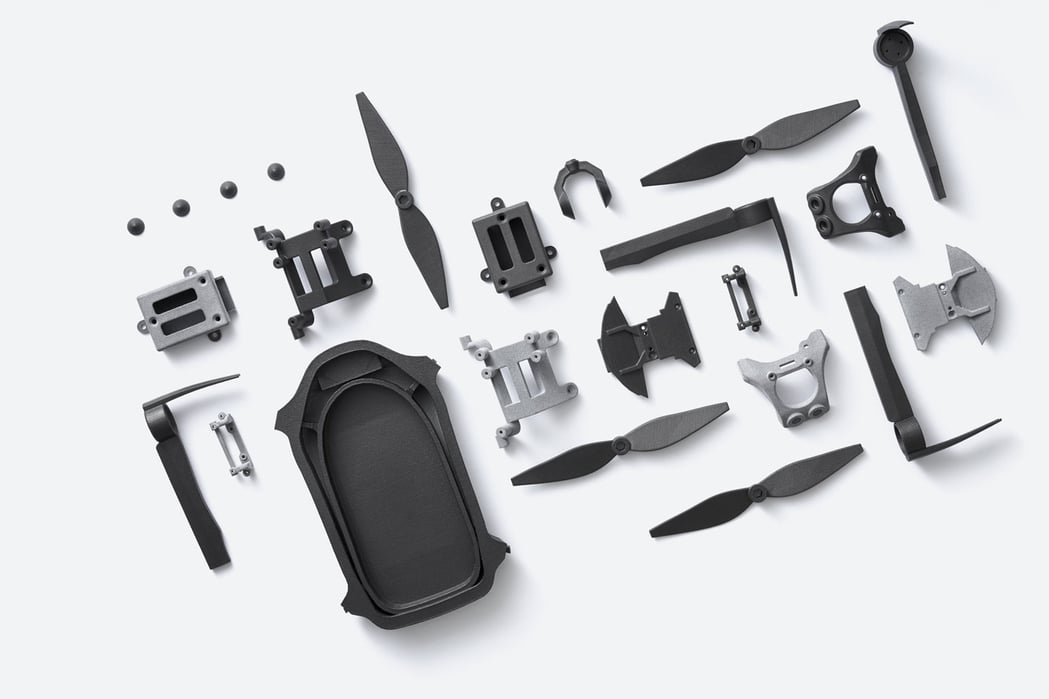
The Magic
A wondrous array of 3D printing technology is available to users worldwide—after decades of refinement, and the list just continues to grow—supporting a billion-dollar industry accompanied by a wondrous assortment of hardware, software, and materials. And while all the options available today are mind-boggling, even more so is the fact that someone dreamt all this stuff up! It all began with that lightbulb moment for new product design, followed by 3D modeling, and instructions for a 3D printer to begin depositing layers.
The Pioneers
Sequestered in a lab back in the early 80’s, Chuck Hull was that ‘someone,’ an inventor motivated by the need to make better, faster models for product testing. The result was the first 3D printing patent, featuring resin-based stereolithography (SLA)—and the beginning of something far more revolutionary than the industrial engineer could have ever realized.
Carl Deckard and Dr. Joe Beaman weren’t far behind in patenting selective laser sintering (SLS), using lasers to meld together powder particles in building structures layer by layer. Not long after that, and completing a full decade of innovation by the top three pioneers, Scott Crump followed up with a patent for fused deposition modeling (FDM), a form of 3D printing that relies on extrusion of thermoplastics, and is now ubiquitous in settings like schools, home workshops, and professional environments for industrial designers prototyping on-site.
As the original patents began to expire around 2014, 3D printing turned into an enormously popular break-out technology, embraced by the mainstream—and included users from the DIY realm all the way up to the highest echelons of industrialism. The benefits were too great to ignore, and as 3D printing became more accessible and affordable, many companies and individuals alike began reaping the immediate rewards of unprecedented design freedom, improved product development with faster results, and the ability to make strong yet lightweight products never possible before via traditional methods.
The Evolution
The wonders of rapid prototyping opened up a whole new world for industrial engineers, and the infatuation with 3D printing still hasn’t worn off as designers in applications like aerospace, architecture, and medicine are able to design models for new parts and devices that can be tested and re-designed quickly—leading to the ultimate perfection in customized, high-performance parts. Users have continued to stretch the limits in the past few decades too, leading to the production of functional end-use parts that can be created in low-batch production, as well as all-out mass production too when necessary.
The Technology & Materials Available from Shapeways
The list of 3D printing technology available to users today just continues to grow, along with the accompanying hardware, software, and materials. Following are the different types of technology Shapeways offers, along with suggestions for materials and how they apply to different fields.
SLA 3D Printing
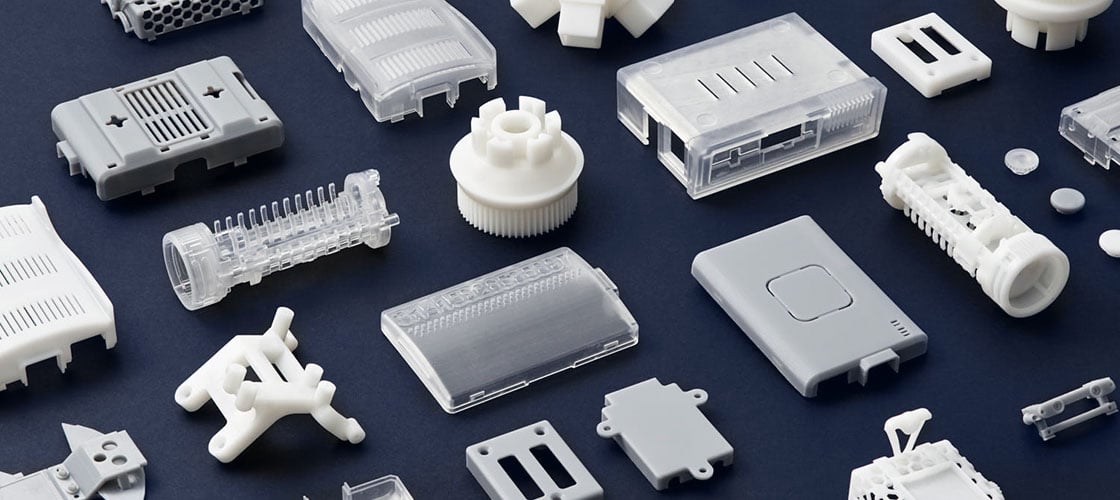
Still revered as one of the most powerful forms of 3D printing for industrial manufacturing, stereolithography (SLA) has stood the test of time in a fast-growing market, to say the least. Outpaced only by SLS 3D printing, SLA still reigns as a dominant technological force, relying on UV light to cure resin-based prototypes and durable end-use parts with tight tolerances and extremely high resolution—all possible on the small to large scale.
Available materials include the following:
SLA Plastic Accura® 60 – a semi-clear acrylate recommended for lighting components, casting patterns, tech accessories, and snap-fit assemblies. With the ability to produce highly-detailed parts, this material is also well-suited for 3D printing prototypes and models for presentations.
SLA Plastic Accura® Xtreme™ – a versatile gray plastic, Accura Xtreme is meant for complex, functional parts like tech accessories, mechanical parts, and snap-fit assemblies.
Accura® Xtreme™ 200 – a watertight polymer resin, Accura Xtreme 200 is a tough acrylate used for 3D printing mechanical parts, master patterns for casting, snap-fit assemblies, and display models.
Ultracur3D® RG 35 – used for 3D printing high-performance sockets, jigs and fixtures, and parts for air ducts, RG 35 is a flame-retardant, and a reactive urethane photopolymer.
SLS 3D Printing
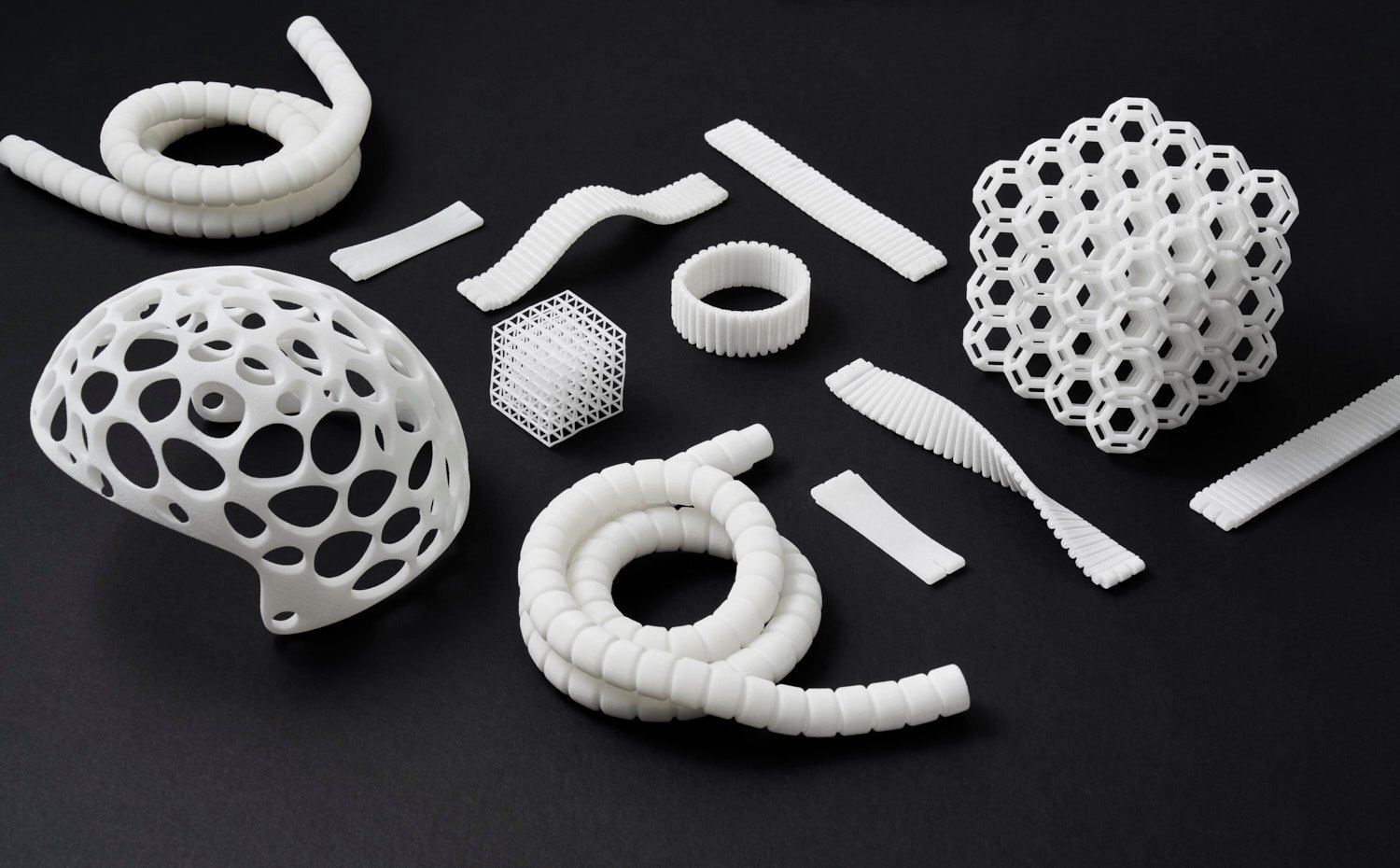
While it may have been created by one of the forefathers of 3D printing decades ago, selective laser sintering still serves as a forerunner in the industry, maintaining its relevance as a versatile method that relies on laser technology to sinter powder particles together—melding them into high-powered, high-performing functional parts.
From large-scale architectural parts to luxurious jewelry, SLS 3D printing is used for complex geometries that may also have moving or interlocking parts. And because supports are not necessary (due to the bolstering effect of the extra powder surrounding parts during printing), designers enjoy boundless freedom—with elimination of the stress involved with removing support structures in post-processing—leading the way to innovating in ways never before possible.
Available materials include the following:
Nylon 12 [Versatile Plastic] – this extremely popular material is used for a wide variety of applications to include mechanical parts, architectural designs, prosthetics, and even luxury jewelry.
Thermoplastic polyurethane (TPU) – Durable and impact-resistant, TPU is made for functional products requiring elasticity in applications like automotive, medical, robotics, sports equipment, and even footwear.
Nylon 11 – this white nylon is impact-resistant, durable, and also biocompatible, making it suitable for the exteriors of medical devices—as well as other applications like automotive, sports equipment, functional prototypes, and parts like hinges.
SLM 3D Printing
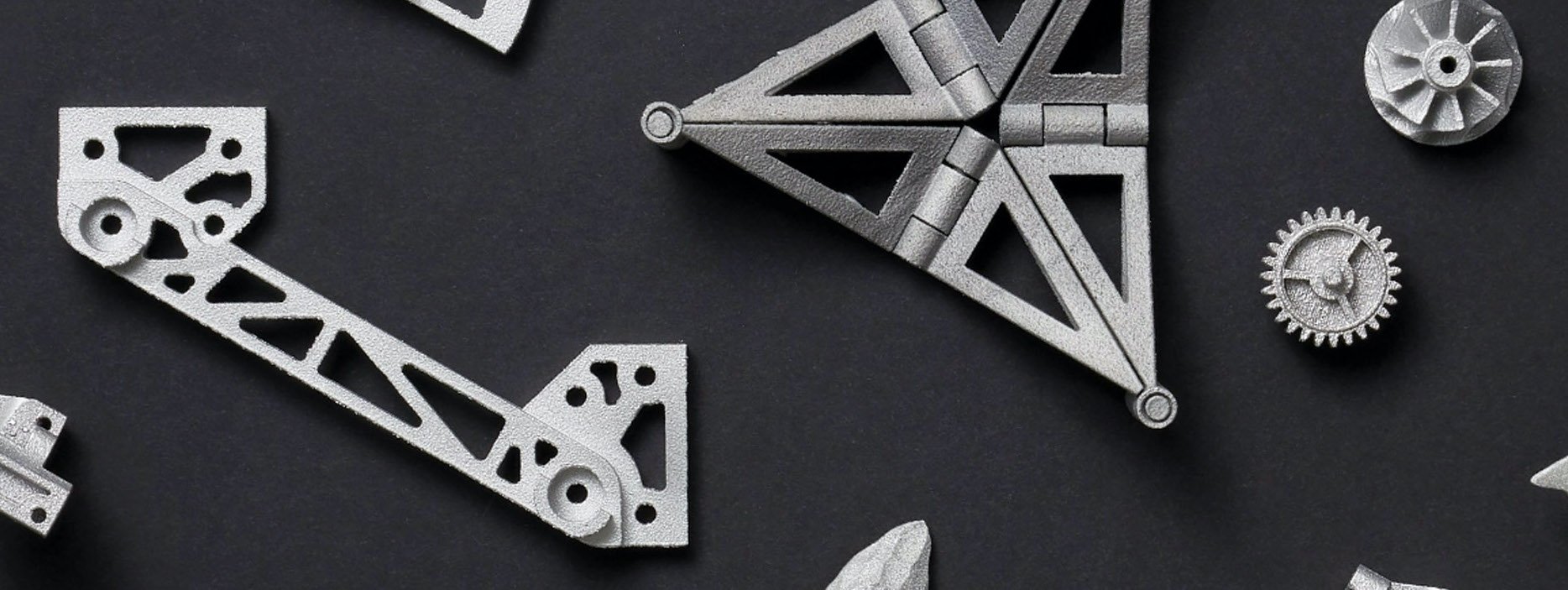
Selective laser melting is a highly industrial technology used in 3D printing metal. Powerful lasers are used to melt metal powders—like the aluminum offered by Shapeways. Used for mass production, SLM is similar to SLS 3D printing as a laser sinters powder particles together; however, support structures must be used with SLM due to the heavier weight of metal parts.
Aluminum – offering high strength and accuracy, this metal alloy is resistant to corrosion, and is also highly conductive—making it suitable for a variety of engineering applications, as well as parts for aerospace.
Binder Jetting Technology
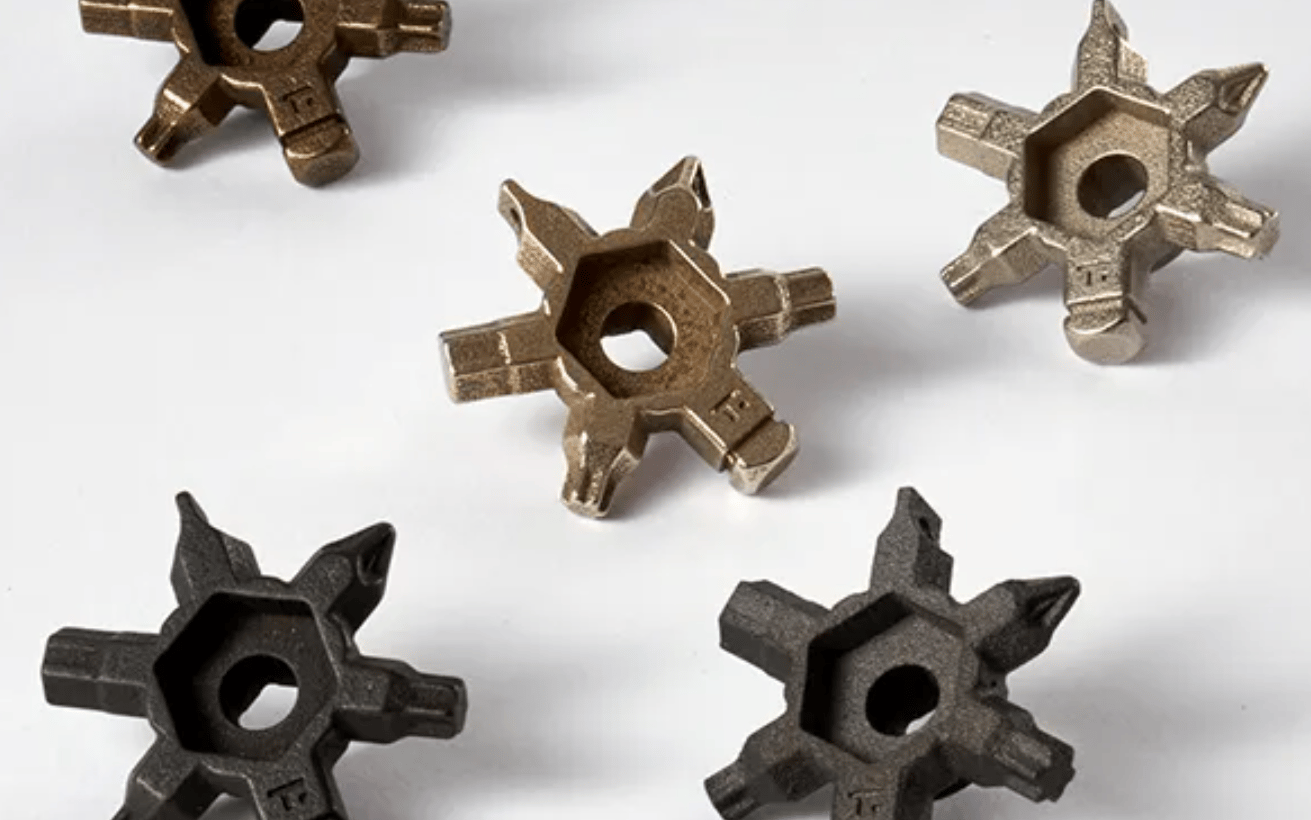
Binder Jetting is a process where an industrial printhead selectively deposits a liquid binding agent onto a thin layer of powder particles. Like SLS 3D printing, support structures are not necessary, leading to much greater freedom for industrial designers creating complex geometries—and with the ability to make parts that were previously considered impossible. Parts can also be nested, with greater volumes manufactured at once.
Available materials include the following:
Stainless Steel 316L – this single-alloy metal offers lighter weight, accompanied by strength and corrosion-resistance, and is useful in applications like surgical tooling, heat exchangers, fasteners and brackets, and mechanical machinery.
Steel – made with 60% stainless steel and 40% bronze matrix, this material is used in applications like tools, small parts, and home décor.
Sandstone – unique because it can be used with multi-color printing, this material is useful for applications like architecture, medicine, and smaller structures.
Material Jetting
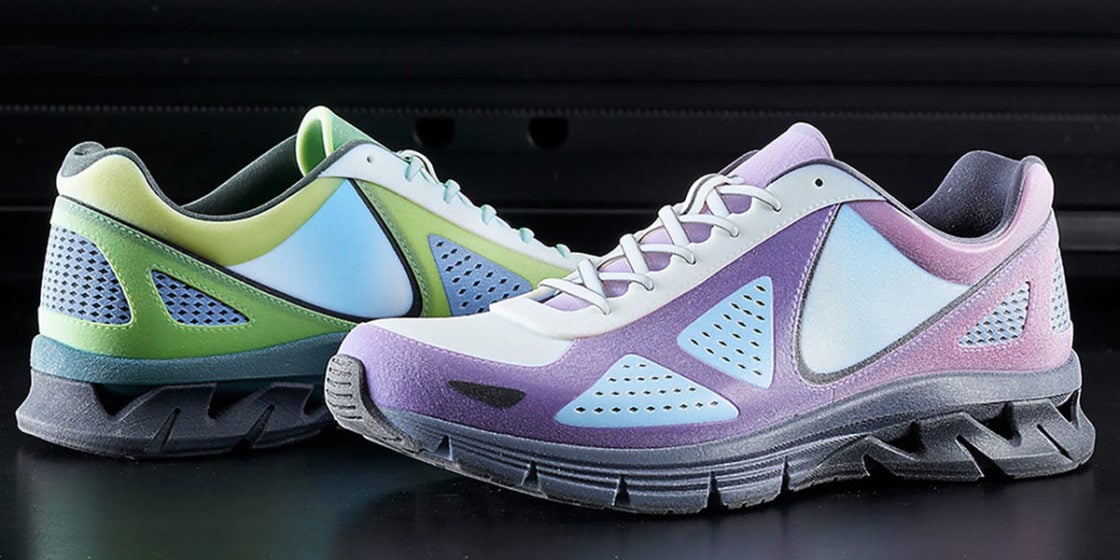
Further demonstrating the impressive progression from inkjet printing—and from 2D to 3D—material jetting (MJ) is used at the industrial additive manufacturing level too, relying on multiple nozzles to deposit hundreds of resin droplets to be cured with UV light. MJ processes combine the benefits of both multi-jet and polyjet 3D printing, resulting in multi-material, multi-color parts with extremely high resolution and excellent surface finishes.
Available materials include the following:
Fine Detail Plastic – this material is used for models, jewelry prototypes, and master patterns for 3D printed molds.
Multi-color Polyjet – over 500,000 colors can be produced through MJ technology for realistic prototypes, medical models, visual aids, and displays.
Multi Jet Fusion
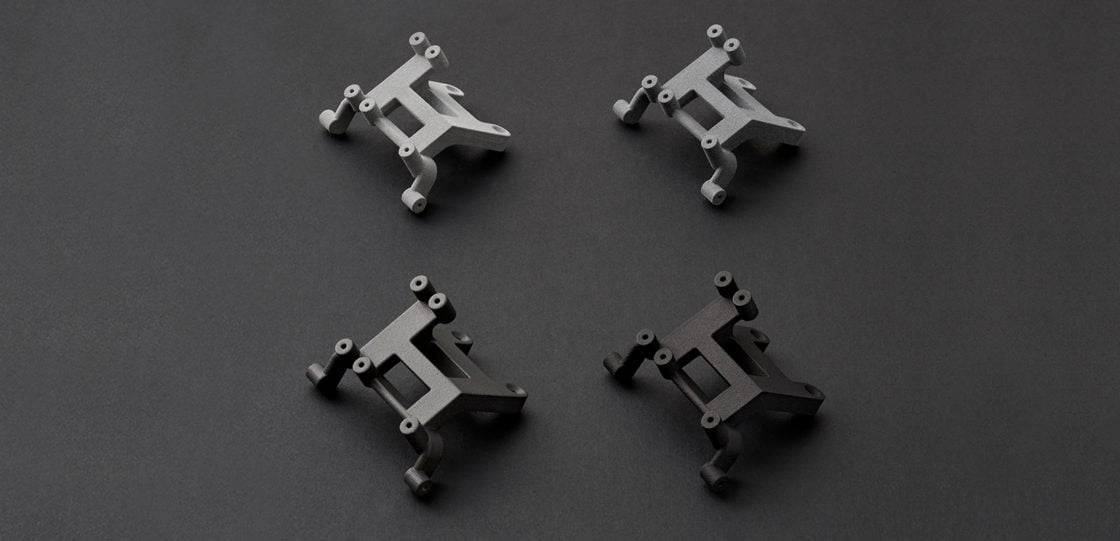
MJF technology is powerfully complex, offering significant advantages. Due to its potential for exemplary production using thermoplastic polymers with a set of ink-jet arrays taking in infrared heat, MJF is also outstanding for production of complex parts in higher volumes.
Industrial designers and engineers choose MJF because of the ability to produce parts with excellent dimensional accuracy and mechanical properties, as well as enjoying the benefit of greater design freedom without a need for support structures.
Available materials include the following:
Nylon 12 [MJF Plastic PA12] – used with MJF for applications like drone technology, mechanical parts, architectural designs, fixtures, prosthetics, and designer jewelry.
Nylon 12 Glass Beads [MJF Plastic PA12GB] are used in applications requiring great strength, and stiffness—to include robotics, drone technology, medical devices like braces, housing and cases, and tooling.
Wax casting
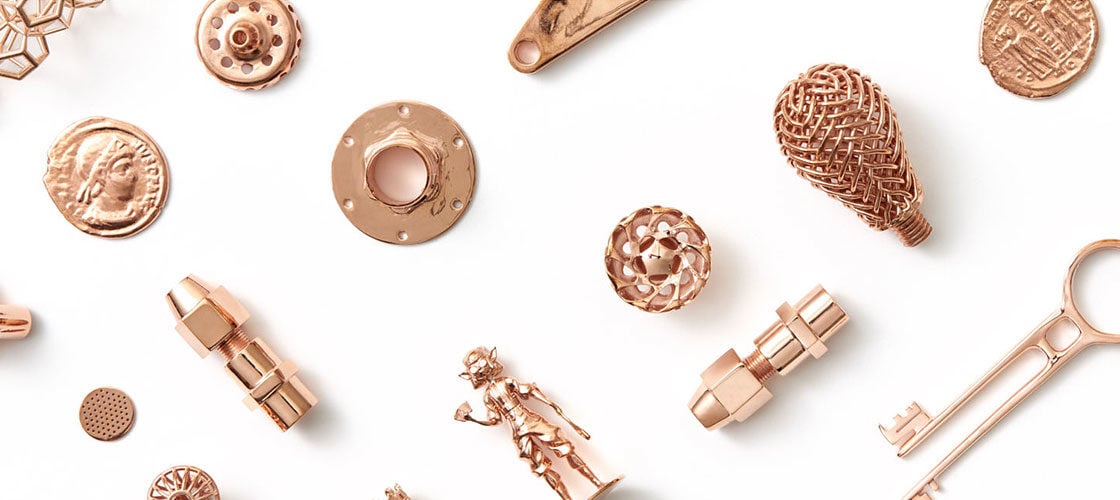
A technology that is not only unique but somewhat mysterious too—created in ancient times and still used today—wax casting is now available with a modern new twist: 3D printed molds. Once the molds are created out of wax, molten metal is poured into them and the original material melts away (leading to the term “lost wax casting”). This is a specialized technology involving multiple steps—along with specialized tools and materials that result in professional looking work. Wax casting is suitable for making complex, intricate parts—and materials like copper offer good corrosion-resistance for a variety of applications.
Available materials include the following:
Copper – for applications like marine accessories, heat accessories, and prototypes and models.
Brass – for applications like jewelry, prototypes, and home décor.
Bronze – suitable for jewelry, fashion, home décor, prototypes and models.
Platinum and gold are used for a variety of jewelry applications, and a variety of finishes are offered through Shapeways also, to include light, matte, polished, and shiny.
Enjoy the benefits of Shapeways advanced technology and a wide range of materials for manufacturing your designs and parts with accuracy and intricate detail. Ordering and manufacturing is as easy as uploading one or more designs, requesting instant quotes, and then waiting for parts to be manufactured—whether designated on an average, priority, or rush basis.



